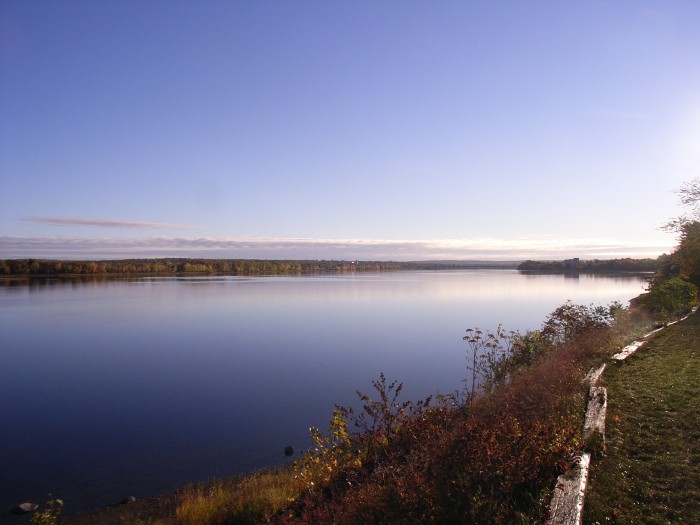
As early as May 1783, at the end of the American Revolutionary War, thousands of American Loyalists settled along the banks of the St. John River from its mouth to Woodstock. Some of them founded a village at Pointe Sainte-Anne where there were still Acadian settlers who, for lack of property title, were driven out. The Loyalist village was named Fredericstown (later Fredericton), after Prince Frederick, second son of King George III. In 1785, it became the capital of New Brunswick province founded a year earlier by the Loyalists. Even today, the French and Acadian history of Pointe Sainte-Anne remains largely unknown, even ignored. Long before the Loyalists arrived, it came to an end following the British expedition on the St. John River in the fall of 1758. But it was a tragic end…
Colonel Monckton’s expedition departed from Fort Frederick (present-day Saint John). It included 2,300 men, among them a battalion of American Rangers. The houses, cattle and crops of Acadian villages encountered on the way were methodically destroyed, notably in Grimross (now Gagetown) and Jemseg, the two largest villages before Pointe Sainte-Anne. The population of these three villages had greatly increased since the influx of Acadian refugees fleeing the isthmus of Chignectou after the fall of Fort Beauséjour in June 1755. Monckton knew that most of the Acadians had fled north, as he had hoped. This is why with the approach of winter, he decided to turn back before reaching Pointe Saint-Anne in order to avoid facing navigation hardships. His military operation was short lived, beginning on September 11th and ending on November 21st, but the worst was yet to come. In February 1759, Lt. Moses Hazen, head of a Ranger detachment, was sent to reconnaissance at Pointe Sainte-Anne. In mid-February upon arrival at his destination, he met Joseph Godin and his family by accident…
Tragic accident
Who was Joseph Godin? He was a notable settler, native to the region, the King’s interpreter, and commander of the Acadian militia of the St. John River. In 1692 his father, a Canadian naval officer, was appointed second lieutenant at Fort Nashwaak, which had just been erected by Joseph Robinau de Villebon, commander of Acadia, at the mouth of the Nashwaak River (Fredericton). He was one of the settlers brought by Villebon who granted him land on the banks of the St. John River. In 1698, Fort Nashwaak, considered too isolated in peacetime, had been demolished and abandoned. The region, under the French seigniorial regime, was inhabited only by the lords themselves, their families and a few settlers. Joseph Godin inherited his father’s real estate when the village, established at Pointe Sainte-Anne facing the mouth of the Nashwaak River, was about to take off with the arrival of Acadian settlers from Nova Scotia in the 1730s…
Arriving at Pointe Saint-Anne on his reconnaissance mission, Moses Hazen was undoubtedly unaware of the existence of Joseph Godin. Why then did he choose to destroy the Acadian village and especially to massacre Godin’s daughter and three of his grandchildren and to bring their four scalps and six prisoners, including Godin himself, to Fort Frederick? This atrocious episode, however, earned Lieutenant Hazen the rank of captain!
Today, we must therefore salute the display at the Fredericton Region Museum which tells the story of the key players in the village of Pointe Sainte-Anne, without opposing one side to the other, by simply showing human beings, as they were in this troubled period.
